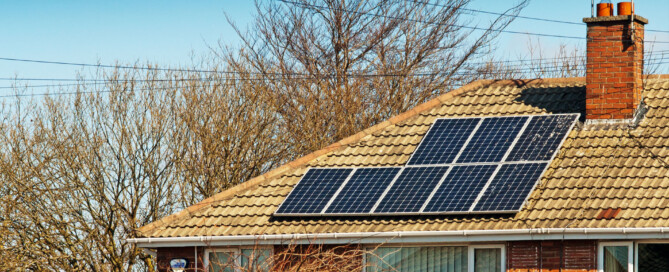Our Location
304 North Cardinal St.
Dorchester Center, MA 02124

When you evaluate solar panels for your photovoltaic (PV) system, you will encounter two main categories of panel options: monocrystalline solar panels (mono) and polycrystalline solar panels (poly). Both types of solar panels have the same purpose: converting sunlight into electricity. However, the crystalline silicon structure of individual solar cells affects their performance and appearance. And there are some key differences to be aware of.
Monocrystalline solar panels are characterized by their black PV cells with rounded edges. They have a higher conversion efficiency than polycrystalline panels, which means they produce more kilowatt-hours of electricity. If you want to install a solar panel system but your space is limited, monocrystalline panels will be more productive per square foot. While they’re the most efficient solar panels, they’re also the most expensive, since the manufacturing process of single-crystal silicon cells is more complex.
Polycrystalline solar panels have blue-hued PV cells with straight edges. They have a lower efficiency compared with monocrystalline cells, which means you need more panels to reach the same power output. However, polycrystalline panels also have a lower price, since their manufacturing process is simpler. Polycrystalline panels are very durable, but they tend to last slightly less than monocrystalline panels. They are also affected more by high temperatures, which reduces their productivity on the hottest days.
| FACTOR | MONOCRYSTALLINE SOLAR PANELS | POLYCRYSTALLINE SOLAR PANELS |
| Silicone Arrangement | One pure silicon crystal | Many silicon fragments melded together |
| Cost | More expensive | Less expensive |
| Appearance | Panels have black hue | Panels have blue hue |
| Efficiency | More efficient | Less efficient |
| Lifespan | 25-40 years | 20-35 years |
| Temperature Coefficient | Lower temperature coefficient, making them more efficient in heat | Higher temperature coefficient, making them less efficient in heat |
Monocrystalline solar panels are more expensive than polycrystalline solar panels when comparing panels alone. However, that doesn’t mean they may not be the best option for you. The main factor that determines the cost difference between these two solar panel types is the silicon structure. To produce polycrystalline panels, manufacturers pour molten silicon into square molds, then cut the resulting wafers into individual cells. Conversely, to produce monocrystalline panels, the solidification of silicon must be controlled very carefully, which is a more complex process—this makes single-crystal solar cells more expensive.
When comparing the price of both panel types, keep in mind that monocrystalline solar panels have a higher cost. Meanwhile, the cost of inverters, wiring, electrical protections, racking, and labor is the same for both. Also consider that since monocrystalline panels are more efficient, you might see a better return on your investment if you have limited space for a solar panel installation.
Saving money is one of the best reasons to go solar, and whether you choose mono or poly solar panels, you’ll be decreasing your electricity bills. The option you choose comes down to your personal preferences, space constraints, and the financing option you choose.
